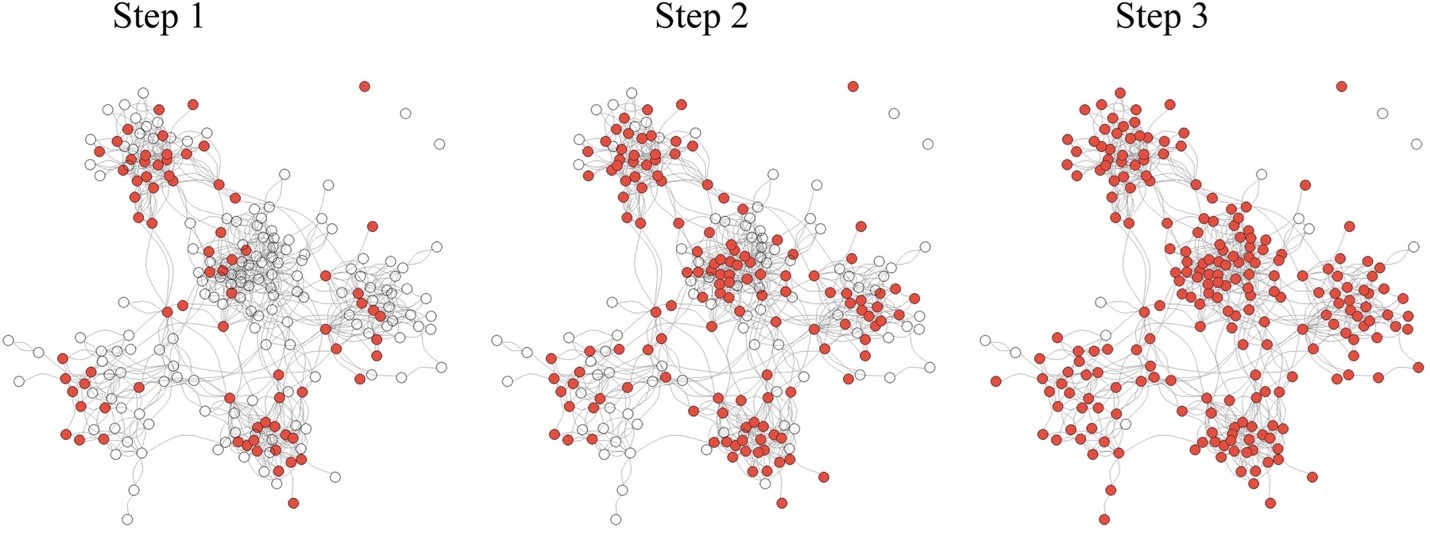The Ripple Effect: Understanding organizational behavior contagion to cultivate culture at scale
- 5 Min Read
Behavior contagion is a powerful force shaping organizational culture. It reveals that behaviors spread not only among immediate colleagues but also among individuals further removed in the professional network. Harnessing this phenomenon strategically can help organizations evolve and strengthen their workplace cultures.
- Author: Michael Arena
- Date published: Oct 2, 2023
- Categories

In the intricate tapestry of organizational culture, behaviors do not exist in isolation. They are not mere individual actions but rather, like ripples in a pond, they extend far beyond the initial act. This phenomenon, known as behavior contagion, highlights the extraordinary influence we have on each other within the workplace. Researchers have long explored the idea that our behaviors are not only shaped by our immediate environment but also spread like wildfire through our professional networks.
Recent studies, delving deep into the intricacies of behavior contagion, have unveiled compelling insights into how behaviors are transmitted among employees. These findings challenge our traditional understanding of culture and have profound implications for organizations seeking to nurture and evolve their workplace cultures.
Behavior contagion: A deeper perspective
Behavior contagion, the notion that behaviors are akin to contagious viruses within social networks, has been discussed in various contexts, but its implications within the workplace are particularly intriguing. Imagine your daily actions, attitudes, and work habits radiating outward like invisible tendrils, influencing not only your immediate colleagues but also those several degrees removed from you.
To explore this concept, we conducted a study utilizing a comprehensive 360-degree review to assess individual behavioral strengths combined with organizational network analysis techniques. The results demonstrated that all cultural attributes were contagious to some extent and transmitted among direct employee connections. For instance, if a close colleague received a high rating for their ability to “manage relationships”, employees connected to that colleague were 37% more likely to also receive high ratings for this same attribute in subsequent evaluations. Conversely, other behaviors exhibited lower transmission rates, with only a 12% increase in close connections adopting a behavior like “take action”, but they all demonstrated an effect.
Previous research indicates that this contagion effect extends up to three degrees of separation. In other words, behaviors influence not only our immediate colleagues but also individuals who are part of their network, creating The Ripple effect.
Examining The Ripple Effect of behavior contagion
The Ripple Effect refers to the phenomenon where organizational behaviors, actions, or events do not exist in isolation within a workplace culture. Instead, they have a cascading and interconnected impact that extends beyond their initial occurrence, influencing not only immediate colleagues but also individuals further removed within the professional network. It emphasizes the idea that behavioral actions are not isolated events but rather have the potential to influence a wide range of outcomes.
This effect extends three steps away in the network from our closest colleagues and holds true for the majority of the behaviors evaluated. For instance, the “manages relationships” cultural attribute was 37% more likely at Step 1 for our closest colleagues, 12% more likely at Step 2 for colleagues two degrees away, and 6% more likely at step 3 for colleagues three degrees away. Similarly, “takes accountability” exhibited a 20% increase at step 1, a 12% increase at Step 2, and a 6% increase at Step 3.
Cultivating culture at scale
Individual employees’ impact on shaping organizational culture at a larger scale is often underestimated. While their direct actions may influence only a handful of colleagues, their influence extends significantly when considering second and third-degree connections, leading to a widespread shift in behavior. For instance, “strong judgment” propagates swiftly throughout the network, demonstrating its contagious nature up to three degrees, as illustrated in Figure 1.

Furthermore, the strength of employee connections plays a crucial role. Mutually valued connections characterized by ongoing interactions, or strong ties, exhibit the most effective transfer of behaviors. These strong ties foster higher levels of trust, leading to more open communication, constructive feedback, and deep learning. Consequently, each of the cultural attributes exhibits greater transmission among employees with strong ties compared to those with weaker ties.
Implications for organizations
For leaders and decision-makers, these insights into behavior contagion have profound implications. They emphasize the importance of fostering a culture aligned with the organization’s values and goals. Leaders can utilize behavior contagion as a tool for driving positive change by identifying and nurturing key influencers within the organization.
To do so, organizations can embrace several strategies and practices to harness The Ripple Effect of organizational behaviors and create a positive workplace culture. This includes such things as:
Recognize the power of behavior contagion: Understand that behaviors within an organization are contagious and can influence a wide range of outcomes. Acknowledge that individuals’ actions have a Ripple Effect that extends beyond immediate colleagues.
Leverage positive behaviors: Identify and promote positive behaviors that align with the organization’s values and goals. Encourage employees to exhibit these behaviors, as they can spread throughout the organization and contribute to a healthier culture.
Identify key influencers: Recognize individuals who have a significant influence on their colleagues and professional networks. These key influencers can be instrumental in driving positive changes in behavior. Leaders should work with these influencers to promote desired behaviors.
Nurture strong connections: Foster strong, mutually valued connections among employees. These strong ties facilitate the effective transfer of behaviors, trust-building, open communication, constructive feedback, and deep learning. Encourage collaboration and relationship-building.
Behavior contagion is a powerful force shaping organizational culture. It reveals that behaviors spread not only among immediate colleagues but also among individuals further removed in the professional network. Harnessing this phenomenon strategically can help organizations evolve and strengthen their workplace cultures. As we delve deeper into the complexities of behavior contagion, we gain a greater understanding of how to cultivate thriving and enduring organizational cultures.









